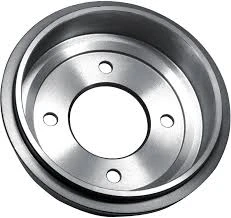Feb . 15, 2025 09:41
Back to list
drum brake won't go back on
When faced with the frustrating issue of a drum brake that won't go back on, many car enthusiasts and everyday drivers find themselves at a loss. This critical component, essential for the smooth operation and safety of a vehicle, can become a puzzle when the time comes for reassembly. The problem often arises after performing maintenance or replacing brake shoes, leading to questions about why the drum no longer fits. Understanding the issue and addressing it effectively requires both practical experience and technical knowledge.
Seek advice on the correct orientation of components. Drum brake systems can slightly differ depending on the vehicle make and model, and installing parts incorrectly can lead to fitting issues. Consulting the vehicle's service manual can provide detailed diagrams and instructions specific to an individual model, helping to ensure all parts are in the correct position and orientation. Inexperienced individuals may also face challenges due to lack of tools, particularly a brake spring tool which is essential for dealing with the high tension springs found in drum brake assemblies. Attempting to fit or remove these springs without the proper tool can be dangerous and result in components not seating correctly. Investing in this tool not only eases the process but ensures it is completed safely. Finally, one must consider whether there is an underlying issue within the brake system that hasn’t been addressed. Situations such as a leaking wheel cylinder can cause brake shoe misalignment once the drum is reinstalled. Inspecting for any fluid leakage and ensuring components like the wheel cylinder are in good working condition before attempting drum installation can save time and ensure brake effectiveness. In summary, resolving the problem of a drum brake that won't go back on involves a systematic approach Adjust the brake shoe tension, check for wear and debris, ensure proper component orientation, utilize appropriate tools, and inspect the broader brake system. By following these guidelines, you not only prevent future troubles but also enhance the reliability of your vehicle’s brake system, upholding safety and performance standards in your daily drive.


Seek advice on the correct orientation of components. Drum brake systems can slightly differ depending on the vehicle make and model, and installing parts incorrectly can lead to fitting issues. Consulting the vehicle's service manual can provide detailed diagrams and instructions specific to an individual model, helping to ensure all parts are in the correct position and orientation. Inexperienced individuals may also face challenges due to lack of tools, particularly a brake spring tool which is essential for dealing with the high tension springs found in drum brake assemblies. Attempting to fit or remove these springs without the proper tool can be dangerous and result in components not seating correctly. Investing in this tool not only eases the process but ensures it is completed safely. Finally, one must consider whether there is an underlying issue within the brake system that hasn’t been addressed. Situations such as a leaking wheel cylinder can cause brake shoe misalignment once the drum is reinstalled. Inspecting for any fluid leakage and ensuring components like the wheel cylinder are in good working condition before attempting drum installation can save time and ensure brake effectiveness. In summary, resolving the problem of a drum brake that won't go back on involves a systematic approach Adjust the brake shoe tension, check for wear and debris, ensure proper component orientation, utilize appropriate tools, and inspect the broader brake system. By following these guidelines, you not only prevent future troubles but also enhance the reliability of your vehicle’s brake system, upholding safety and performance standards in your daily drive.
Prev:
Latest news
-
Brake Drums for Trucks | OEM-Grade, Factory DirectNewsNov.10,2025
-
High-Performance Brake Drums for Trucks | OEM & ISONewsNov.10,2025
-
Brake Drums Built to Last — OEM-Grade, Balanced for TrucksNewsNov.10,2025
-
Brake Drums for Trucks – OEM-Grade, Durable, Low NoiseNewsNov.10,2025
-
Brake Drums for Trucks | OEM, ISO-Certified, Fast DeliveryNewsNov.10,2025
-
Brake Drums: OEM-Grade, Precision Balanced, Factory DirectNewsNov.03,2025
-
Brake Drums: Heavy-Duty, OEM-Grade, Precision-BalancedNewsNov.03,2025


